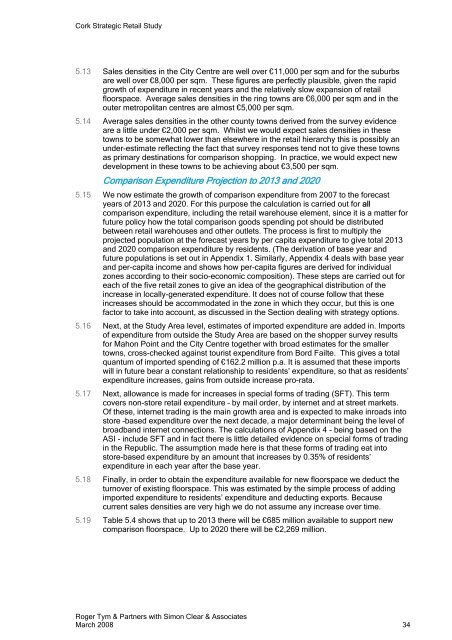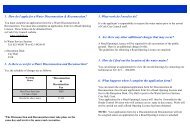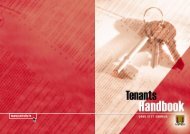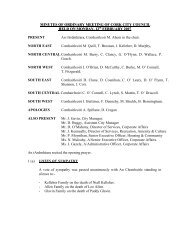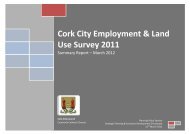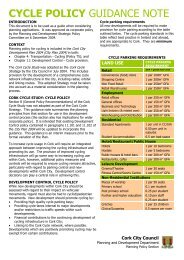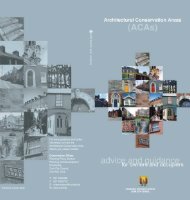Untitled - Cork City Council
Untitled - Cork City Council
Untitled - Cork City Council
You also want an ePaper? Increase the reach of your titles
YUMPU automatically turns print PDFs into web optimized ePapers that Google loves.
<strong>Cork</strong> Strategic Retail Study<br />
5.13 Sales densities in the <strong>City</strong> Centre are well over €11,000 per sqm and for the suburbs<br />
are well over €8,000 per sqm. These figures are perfectly plausible, given the rapid<br />
growth of expenditure in recent years and the relatively slow expansion of retail<br />
floorspace. Average sales densities in the ring towns are €6,000 per sqm and in the<br />
outer metropolitan centres are almost €5,000 per sqm.<br />
5.14 Average sales densities in the other county towns derived from the survey evidence<br />
are a little under €2,000 per sqm. Whilst we would expect sales densities in these<br />
towns to be somewhat lower than elsewhere in the retail hierarchy this is possibly an<br />
under-estimate reflecting the fact that survey responses tend not to give these towns<br />
as primary destinations for comparison shopping. In practice, we would expect new<br />
development in these towns to be achieving about €3,500 per sqm.<br />
Comparison Expenditure Projection to 2013 and 2020<br />
5.15 We now estimate the growth of comparison expenditure from 2007 to the forecast<br />
years of 2013 and 2020. For this purpose the calculation is carried out for all<br />
comparison expenditure, including the retail warehouse element, since it is a matter for<br />
future policy how the total comparison goods spending pot should be distributed<br />
between retail warehouses and other outlets. The process is first to multiply the<br />
projected population at the forecast years by per capita expenditure to give total 2013<br />
and 2020 comparison expenditure by residents. (The derivation of base year and<br />
future populations is set out in Appendix 1. Similarly, Appendix 4 deals with base year<br />
and per-capita income and shows how per-capita figures are derived for individual<br />
zones according to their socio-economic composition). These steps are carried out for<br />
each of the five retail zones to give an idea of the geographical distribution of the<br />
increase in locally-generated expenditure. It does not of course follow that these<br />
increases should be accommodated in the zone in which they occur, but this is one<br />
factor to take into account, as discussed in the Section dealing with strategy options.<br />
5.16 Next, at the Study Area level, estimates of imported expenditure are added in. Imports<br />
of expenditure from outside the Study Area are based on the shopper survey results<br />
for Mahon Point and the <strong>City</strong> Centre together with broad estimates for the smaller<br />
towns, cross-checked against tourist expenditure from Bord Failte. This gives a total<br />
quantum of imported spending of €162.2 million p.a. It is assumed that these imports<br />
will in future bear a constant relationship to residents’ expenditure, so that as residents’<br />
expenditure increases, gains from outside increase pro-rata.<br />
5.17 Next, allowance is made for increases in special forms of trading (SFT). This term<br />
covers non-store retail expenditure – by mail order, by internet and at street markets.<br />
Of these, internet trading is the main growth area and is expected to make inroads into<br />
store –based expenditure over the next decade, a major determinant being the level of<br />
broadband internet connections. The calculations of Appendix 4 - being based on the<br />
ASI - include SFT and in fact there is little detailed evidence on special forms of trading<br />
in the Republic. The assumption made here is that these forms of trading eat into<br />
store-based expenditure by an amount that increases by 0.35% of residents’<br />
expenditure in each year after the base year.<br />
5.18 Finally, in order to obtain the expenditure available for new floorspace we deduct the<br />
turnover of existing floorspace. This was estimated by the simple process of adding<br />
imported expenditure to residents’ expenditure and deducting exports. Because<br />
current sales densities are very high we do not assume any increase over time.<br />
5.19 Table 5.4 shows that up to 2013 there will be €685 million available to support new<br />
comparison floorspace. Up to 2020 there will be €2,269 million.<br />
Roger Tym & Partners with Simon Clear & Associates<br />
March 2008 34


